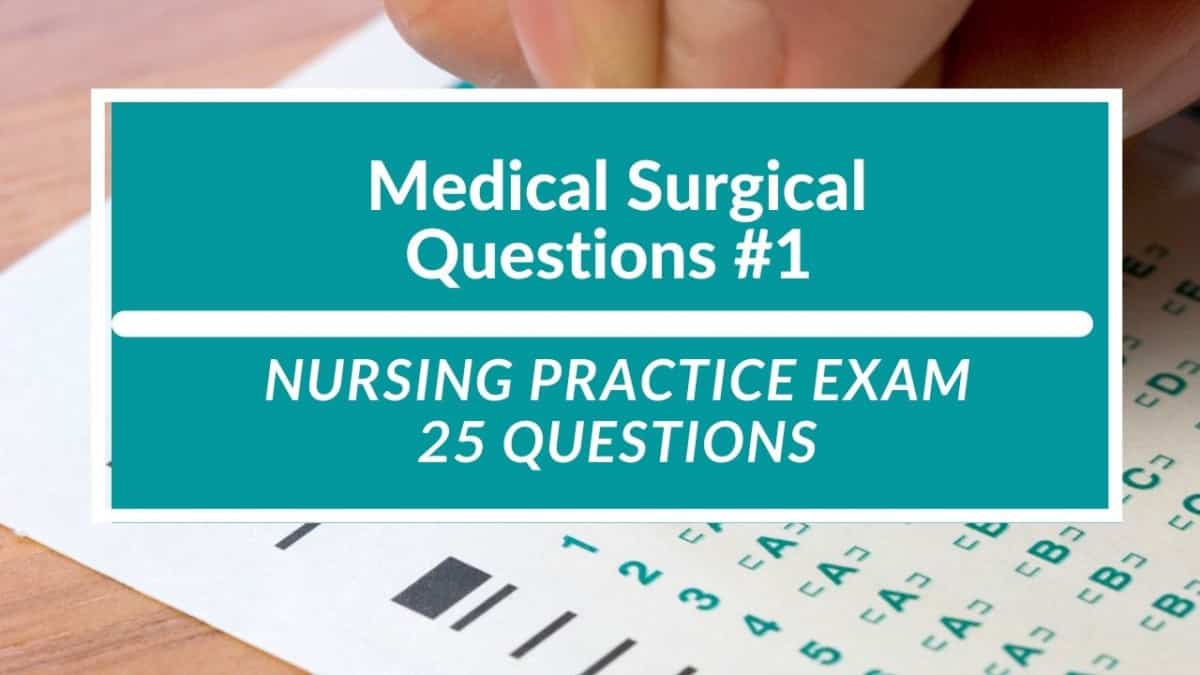Last updated on October 8th, 2021 at 10:00 am
NCLEX Nursing School Practice Exam
Medical Surgical Practice exam 25 questions
#1. A client who has recently returned from a tour in a developing country is diagnosed with hepatitis. The physician reckons that the patient has contracted this infection from eating contaminated food. Which of the following types of hepatitis is most likely the cause of the infection?
#2. A 53-year old male patient is admitted in the gastrointestinal ward due to a newly diagnosed type 2 diabetes mellitus. Upon initial assessment, the nurse should expect all of the following symptoms, except:
Answer: Hypoglycemia
Rationale: The common symptoms of diabetes mellitus are the 3 P’s: polyuria (increased urination), polydipsia (increased thirst, causing dry mouth), and polyphagia (increased appetite). Hypoglycemia is not expected on a newly diagnosed type 2 diabetes. It can be expected if the diabetic patient has been taking a diabetes medication or insulin therapy.
#3. Mr. Smith has been coming to the diabetes clinic over the past three months to have his glycosylated hemoglobin (HbA1C) test done. He asks the nurse, “How will I know if I am pre-diabetic?” The nurse responds that pre-diabetes is diagnosed at which range of HbA1C?
Answer: 5.7 to 6.4%
Rationale: An HbA1C level between 5.7% and 6.4% is considered pre-diabetes. Diabetes is diagnosed if the HbA1C levels are over 6.5%. The normal value of HbA1C levels is less than 5.6%.
#4. A patient is admitted in the urology unit and is diagnosed with acute pyelonephritis. Which of the following symptoms support this diagnosis?
Answer: Chills and costovertebral angle tenderness
Rationale: Acute pyelonephritis is a condition that causes kidney inflammation. It is a bacterial infection that exhibits symptoms of chills, costovertebral angle tenderness, flank pain, fever, nausea and vomiting, and increased urinary urgency and frequency. Nocturnal polyuria is more common in patients with decreased bladder capacity such as elderly clients. Lower urinary tract infections (UTI) usually manifest as a burning sensation upon urination. Jaundice commonly results from liver or gallbladder obstruction.
#5. A 30-year old male client who works as an electrician is rushed into the emergency room following a severe burn injury. The patient has the following vital signs: heart rate: 142 beats per minute; blood pressure 68/45; respiratory rate 24 cycles per minute. His pedal pulses are difficult to find and he appears pale in color. The nurse immediately performs which of the following actions first?
Answer: Commence intravenous fluids
Rationale: Clients with serious injuries due to severe burn accidents are at high risk of death due to hypovolemic shock. This is evidenced by the low blood pressure level of the patient in this scenario. Therefore, the first nursing action is to start intravenous fluid therapy. Options B, C, and D are also important nursing actions for this burn patient, but reversing or preventing hypovolemic shock takes first priority.
Results
Last updated on October 8th, 2021 at 10:00 am
Last updated on October 8th, 2021 at 10:00 am


